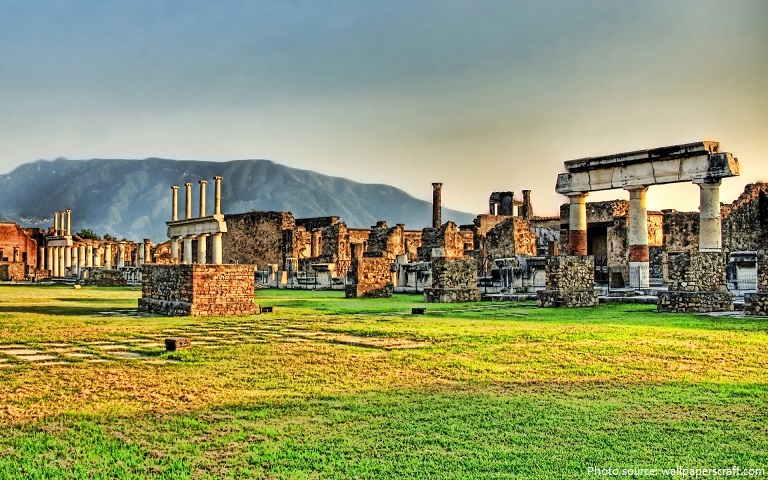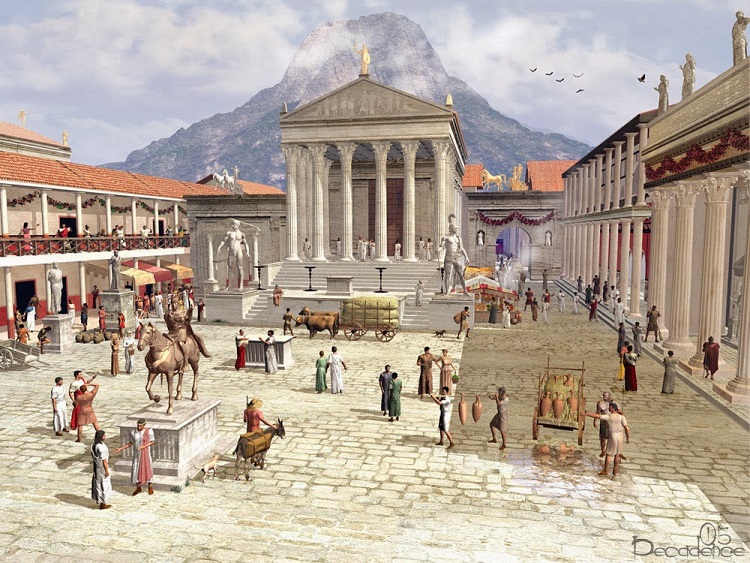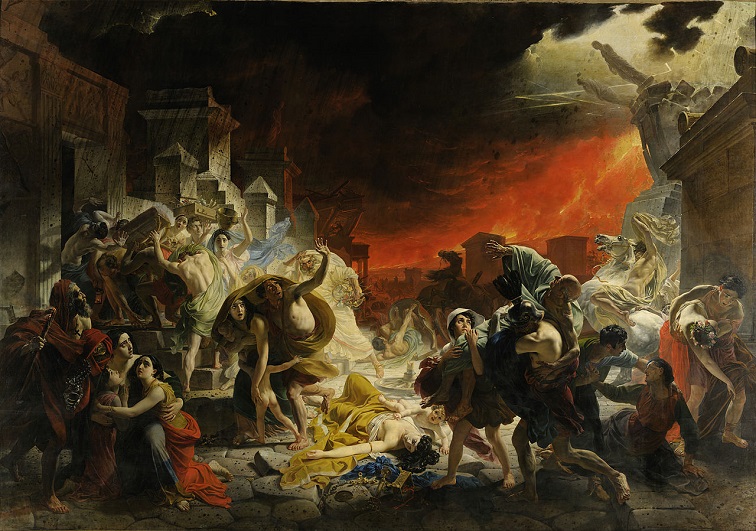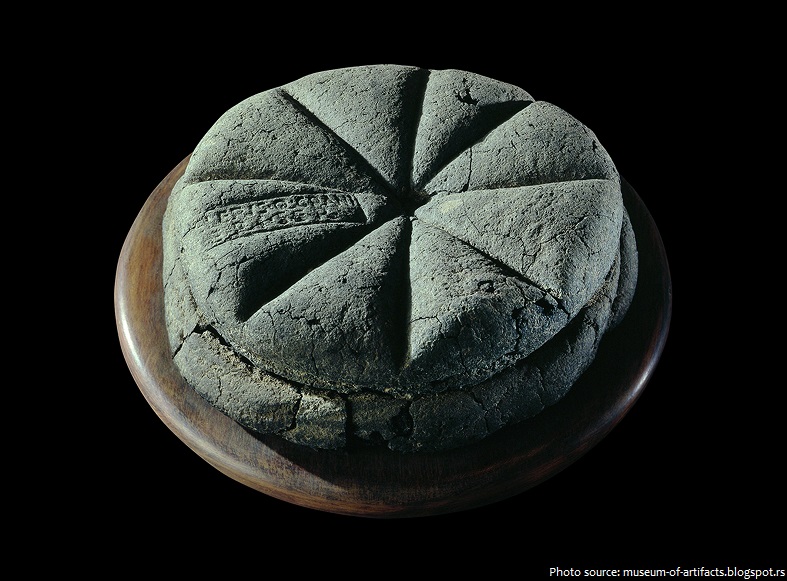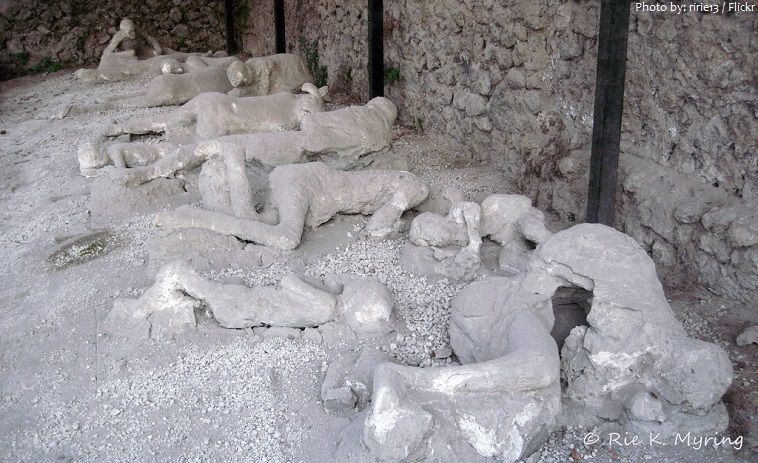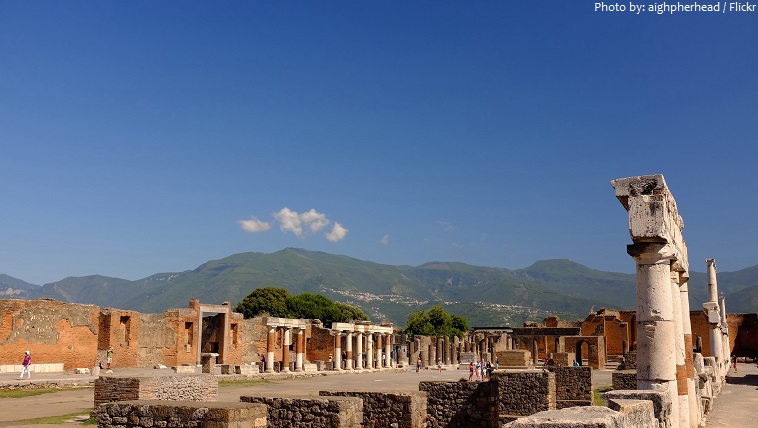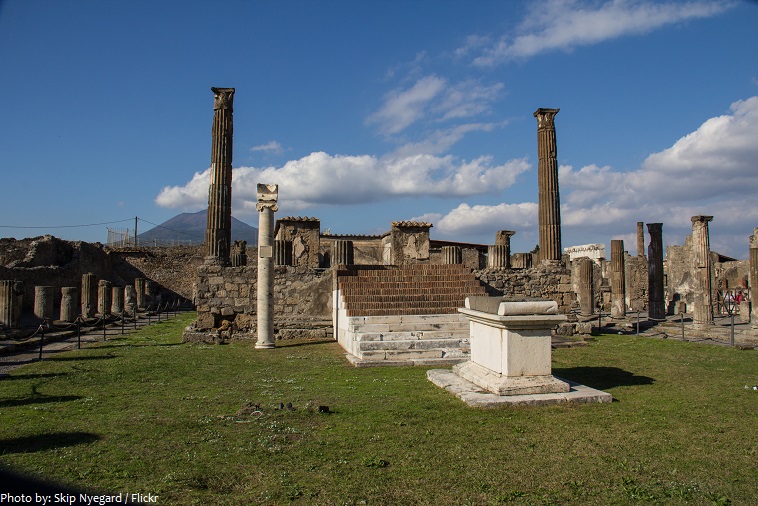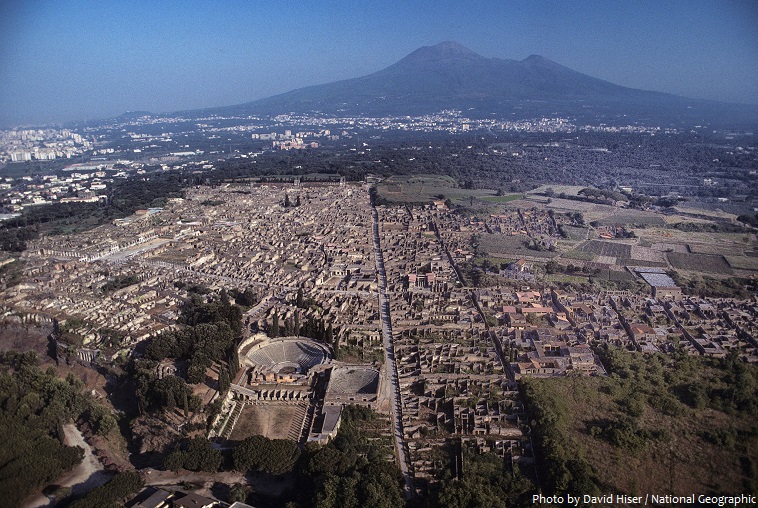Pompeii was an ancient Roman city near modern Naples, in Italy.
Pompeii was destroyed and buried under 4 to 6 meters (13 to 20 feet) of volcanic ash and pumice in the eruption of Mount Vesuvius in 79 AD.
The eruption occurred on 24 August 79 AD one day after the religious festival to Vulcan, the Roman god of fire.
Pompei was founded in the 7th or 6th century BC by the Oscans who settled on the slopes of Vesuvius and in an area not far from the river Sarno.
It came under the domination of Rome in the 4th century BC, and was conquered and became a Roman colony in 80 BC after it joined an unsuccessful rebellion against the Roman Republic.
After the final occupation of the city, Pompeii underwent a vast process of infrastructural development,
most of which was built during the Augustan period.
Pompeii was a highly developed and flourishing city before the disaster. The city had a complex water system, an amphitheatre, gymnasium, and a port.
Pompeii supported about 11,000 inhabitants at the time of its destruction.
The dust “poured across the land” like a flood, one witness wrote, and shrouded the city in “a darkness…
like the black of closed and unlighted rooms.” Two thousand people died, and the city was abandoned for about 1,500 years. [Painting below: The Last Day of Pompeii by Karl Brullov]
After thick layers of ash covered Pompeii, it was abandoned and eventually its name and location were forgotten.
Pompeii was first rediscovered in 1599 by Domenico Fontana, an Italian architect. He was digging up a new course for the river Sarno. He had dug a channel underground when he discovered the city.
Work did not begin at Pompeii until 1748, and in 1763 an inscription (“Rei publicae Pompeianorum”) was found that identified the site as Pompeii.
The ashes had acted as a marvelous preservative. Underneath all that dust, Pompeii was almost exactly as it had been 2,000 years before. Its buildings were intact. Skeletons were frozen right where they’d fallen. Everyday objects and household goods littered the streets. Later archaeologists even uncovered jars of preserved fruit and loaves of bread! [Photo below: A preserved loaf of bread discovered at Pompeii]
The objects that lay beneath the city have been preserved for centuries because of the lack of air and moisture.
During the excavation, plaster was used to fill in the voids in the ash layers that once held human bodies. This allowed archaeologists to see the exact position the person was in when he or she died.
In total, more than 1,000 casts have been made of the dead bodies found in Pompeii, including whole
families, groups of friends or couples who died in embrace.
The large number of well-preserved frescoes provide information on everyday life and have been a major advance in art history of the ancient world.
Pompeii still preserves a large number of graffiti which offers us a rare opportunity to read directly the words and thoughts of ancient Roman society. Here are some examples:
“Love dictates what I write and Cupid guides my hand: may I die if I wished to be a god without you.”
“I ask you to become the support of my old age. If you don’t believe I have money, don’t love me.”
“I don’t care about your pregnancy, Salvilla; I despise it.”
“The gladiatorial troupe of Aulus Suettius Certus will fight at Pompeii on 31 May. There will be a hunt and awnings.”
“If you’re going to fight, get out!” [written on a tavern wall]
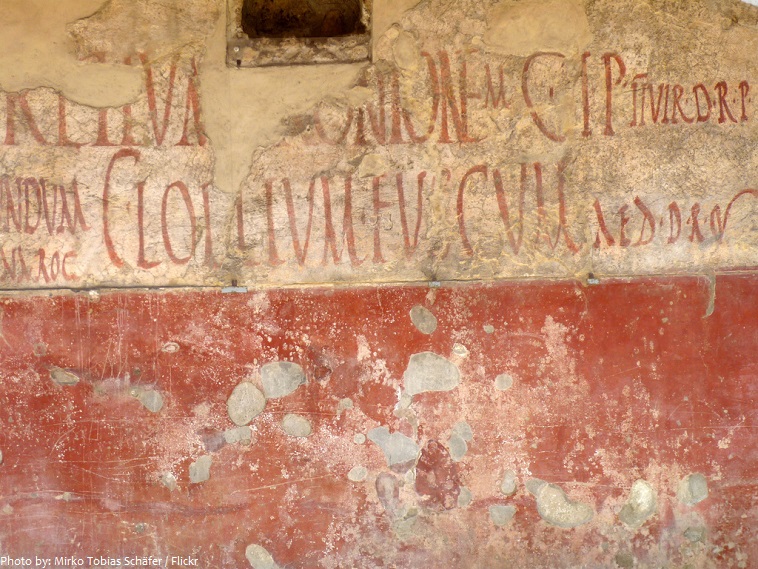
The forum [photo below], the baths, many houses, and some out-of-town villas like the Villa of the Mysteries remain well preserved.
An amphitheater [photo below] and two theaters have been found, along with a palaestra or gymnasium. A hotel (of 1,000 square meters) was found a short distance from the town; it is now nicknamed the “Grand Hotel Murecine“. At least one building, the Lupanar, was dedicated to prostitution.
The Temple of Apollo was built in the 2nd century BC as the city’s most important religious
structure.
The oldest architectural remains of the city, dated to the sixth century BC, are fragments of a Greek Doric temple.
Evidence for the destruction originally came from a surviving letter by Pliny the Younger, who saw the eruption from a distance and described the death of his uncle Pliny the Elder, an admiral of the Roman fleet, who tried to rescue citizens.
Pompeii is one of the most significant proofs of Roman civilization and, like an open book, provides outstanding information on the art, customs, trades and everyday life of the past.
Pompeii is about 8 kilometers (5 miles) away from Mount Vesuvius.
The nearby city of Herculaneum was also destroyed.
Pompeii was a popular holiday resort for rich Romans who came to spend their holidays there.
Even Nero, one of the most famous Roman Emperors, is thought to have had his villa or holiday home in Pompeii and his second wife Poppaea Sabina was a native of the town.
Erotic art in Pompeii and Herculaneum has been both exhibited as art and censored as pornography.
In 1819, when King Francis I of Naples visited the Pompeii exhibition at the Naples National Archaeological Museum with his wife and daughter, he was embarrassed by the erotic artwork ordered it to be locked away in a “secret cabinet”, accessible only to “people of mature age and respected morals”.
Pompeii has been a popular tourist destination for over 250 years.
Today it has UNESCO World Heritage Site status and is one of the most popular tourist attractions in Italy, with approximately 2.5 million visitors every year.
In 1971, the rock band Pink Floyd recorded the live concert film Pink Floyd: Live at Pompeii, performing six songs in the ancient Roman amphitheatre in the city. The audience consisted only of the film’s production crew and some local children.

